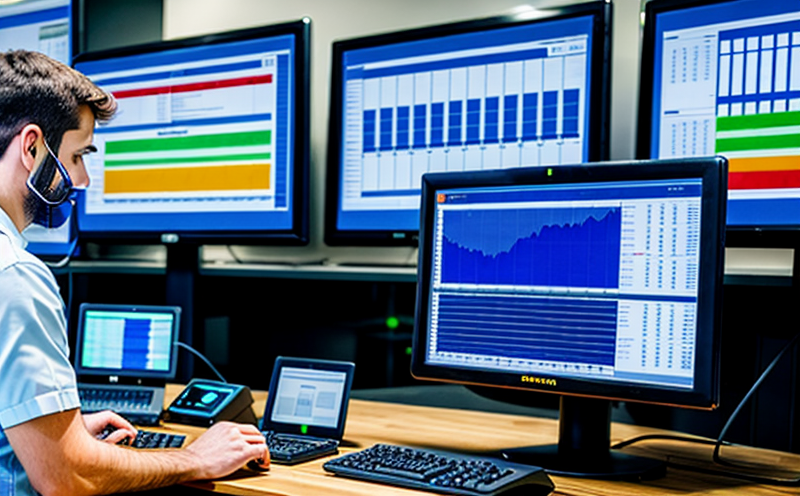Real-time stress monitoring during machine operations
Real-Time Stress Monitoring during Machine Operations Boosting Efficiency and Reducing Downtime
In todays fast-paced manufacturing landscape, machine reliability is crucial for businesses to maintain productivity, reduce costs, and stay competitive. However, machinery can be prone to unexpected failures, leading to costly downtime, lost production, and compromised product quality. This is where Real-time stress monitoring during machine operations comes into play a cutting-edge laboratory service offered by Eurolab that empowers manufacturers to anticipate and prevent equipment failures.
What is Real-Time Stress Monitoring?
Real-time stress monitoring involves the continuous measurement of critical parameters such as temperature, vibration, and pressure within machinery. This data is analyzed in real-time using advanced algorithms, allowing operators to detect subtle changes or anomalies that may indicate impending failure. By leveraging this technology, manufacturers can proactively address issues before they become major problems, reducing downtime and maintaining peak productivity.
Why is Real-Time Stress Monitoring Essential for Businesses?
In todays competitive market, manufacturers face intense pressure to meet demand while minimizing costs. Real-time stress monitoring addresses these challenges in several ways
Predictive Maintenance By identifying potential issues early on, businesses can schedule maintenance during planned downtime, reducing the risk of unscheduled repairs and associated losses.
Increased Uptime With real-time stress monitoring, operators can respond quickly to emerging problems, minimizing the impact on production and ensuring that machines remain operational for longer periods.
Improved Product Quality By detecting anomalies in real-time, manufacturers can take corrective action to prevent defects and ensure that products meet quality standards.
Cost Savings Reduced downtime and increased productivity translate into significant cost savings, allowing businesses to invest in growth initiatives or improve profitability.
Key Benefits of Real-Time Stress Monitoring
Here are some key benefits of implementing Real-time stress monitoring during machine operations
Advantages for Manufacturers
Enhanced Machine Reliability Real-time stress monitoring enables manufacturers to identify potential issues before they become major problems, ensuring that equipment remains operational for longer periods.
Improved Productivity By minimizing downtime and reducing maintenance intervals, businesses can maintain peak production levels, meeting demand and staying competitive.
Cost Savings Reduced repair costs, lower energy consumption, and improved resource allocation contribute to significant cost savings.
Compliance with Industry Standards Real-time stress monitoring helps manufacturers meet regulatory requirements by ensuring that equipment is regularly inspected and maintained.
Advantages for Maintenance Teams
Early Warning Systems Advanced algorithms detect anomalies in real-time, providing maintenance teams with early warnings of potential issues.
Prioritized Maintenance By identifying critical problems first, maintenance teams can focus on the most pressing tasks, optimizing resource allocation.
Improved Diagnostic Capabilities Real-time stress monitoring provides detailed data on equipment performance, enabling maintenance teams to diagnose issues more efficiently.
Advantages for Business Leaders
Data-Driven Decision Making Advanced analytics and real-time insights enable business leaders to make informed decisions about maintenance schedules, resource allocation, and production planning.
Enhanced Collaboration Real-time stress monitoring facilitates collaboration between maintenance teams, operators, and management, promoting a culture of transparency and continuous improvement.
Frequently Asked Questions
Here are some common questions manufacturers may have about Real-Time Stress Monitoring
Q How does Real-Time Stress Monitoring work?
A Our laboratory service uses advanced sensors and algorithms to continuously monitor critical parameters within machinery, detecting anomalies in real-time.
Q What kind of data do you collect during the monitoring process?
A We collect detailed data on temperature, vibration, pressure, and other critical parameters, which are analyzed using advanced algorithms to identify potential issues.
Q How can Real-Time Stress Monitoring help me improve my business operations?
A By predicting equipment failures and reducing downtime, manufacturers can maintain peak productivity, meet demand, and stay competitive in the market.
Conclusion
Real-time stress monitoring during machine operations is an essential tool for businesses looking to boost efficiency, reduce downtime, and enhance product quality. By leveraging this cutting-edge technology, manufacturers can make data-driven decisions, prioritize maintenance tasks, and optimize resource allocation. At Eurolab, we offer a comprehensive laboratory service that empowers manufacturers to anticipate and prevent equipment failures, ensuring peak productivity and profitability.
By partnering with us, businesses can
Stay ahead of the competition by maintaining peak production levels
Reduce costs associated with downtime and maintenance
Improve product quality by detecting anomalies in real-time
Enhance collaboration between maintenance teams, operators, and management




